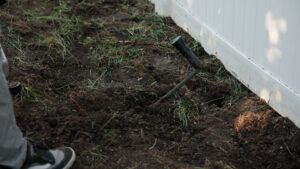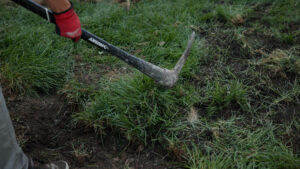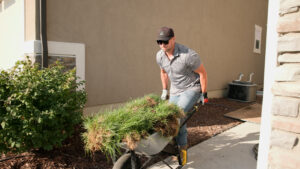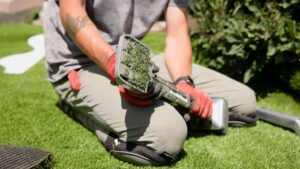Whether you’re building a professional dog training facility or creating backyard agility grass for your furry athlete, choosing the right surface can make all the difference. Artificial turf for dog sports has revolutionized how trainers and dog owners approach agility training, offering a consistent, safe, and low-maintenance alternative to natural grass.
What Makes Dog Agility Turf Ideal for Training
Traditional grass fields present ongoing challenges: muddy patches after rain, uneven wear patterns, and constant upkeep that pulls focus from training. Artificial turf for dog training facilities eliminates these headaches while providing a reliable surface that performs consistently in all weather conditions.
Quality dog agility course turf offers year-round usability without the downtime required for grass recovery. Dogs can train on the same premium surface whether it’s blazing summer heat or the middle of winter, ensuring their skills stay sharp and their paws stay protected.
Durability Features: Built for High-Intensity Training
Not all turf is the same, especially when it comes to withstanding the demands of agility work. Durable turf for dogs must handle:
- Repeated high-speed turns and stops that create concentrated wear patterns
- Claws digging in during explosive starts at jumps and weave poles
- Heavy equipment placement for tunnels, A-frames, and contact obstacles
Premium artificial turf for dog training uses reinforced backing and dense pile construction to resist matting and breakdown. The best options feature UV-stabilized fibers that won’t fade or become brittle over time, ensuring your investment lasts for years of intensive use.
Safety Considerations: Paw Protection Comes First
When evaluating turf for dog agility training, safety features should top your priority list. Look for cushioning turf for dog sports that incorporates:
- Non-toxic infill options: Silica sand or specialized rubber alternatives provide stability without harmful chemicals. Avoid crumb rubber infill, which can overheat and potentially contain contaminants.
- Adequate drainage: Premium dog agility turf includes perforated backing that allows liquid to drain quickly, preventing bacterial growth and keeping surfaces hygienic.
- Optimal blade height and density: Shorter pile heights (1.5-2 inches) work well for agility, providing traction without snagging claws while offering sufficient cushioning for joints during repeated impact.
- Heat management: Consider turf with cooling technology if you’re in warmer climates, as dark surfaces can become uncomfortably hot for sensitive paw pads.
Low-Maintenance Advantage for Training Facilities
One of the most compelling benefits of low-maintenance dog turf is the time and cost savings. Rather than weekly mowing, fertilizing, and reseeding bare spots, maintenance typically involves:
- Regular brushing to keep fibers upright
- Rinsing to remove waste and dirt
- Occasional antimicrobial treatment for high-traffic areas
This simplified maintenance means more time training and less time maintaining, whether you’re running a professional facility or enjoying your backyard agility course.
Installation Considerations
Proper installation makes or breaks performance. Follow installation guidelines precisely if you’re doing a DIY install. Otherwise, work with experienced installers who understand drainage requirements and base preparation specific to dog facilities. Elite Turf Supply networks with professionals who can handle any kind of artificial turf install job. Investing in quality installation ensures your artificial turf for dog training facilities performs optimally from day one.
Frequently Asked Questions
Is artificial turf safe for dogs during intense running?
Yes, when properly selected and installed. Quality dog agility course turf with appropriate cushioning and non-toxic infill provides excellent traction while protecting joints during high-impact activities. Look for products specifically rated for pet use with adequate shock absorption.
How do you clean turf used for dog agility?
Regular maintenance involves removing solid waste immediately, rinsing high-traffic areas weekly, and using pet-safe enzymatic cleaners monthly. For training facilities, professional deep cleaning 2-3 times yearly helps maintain hygiene and appearance.
What turf backing or infill is best for paw protection?
Choose turf with perforated polyurethane backing for superior drainage. For infill, antimicrobial-coated silica sand or zeolite provides stability without heat retention. Avoid crumb rubber; instead, opt for specialized pet-safe infill materials designed for temperature control and paw comfort.
Have Questions?
If you’re interested in installing a dog agility training area in your yard or as part of your dog training business, reach out to Elite Turf Supply to get all of your questions answered!







